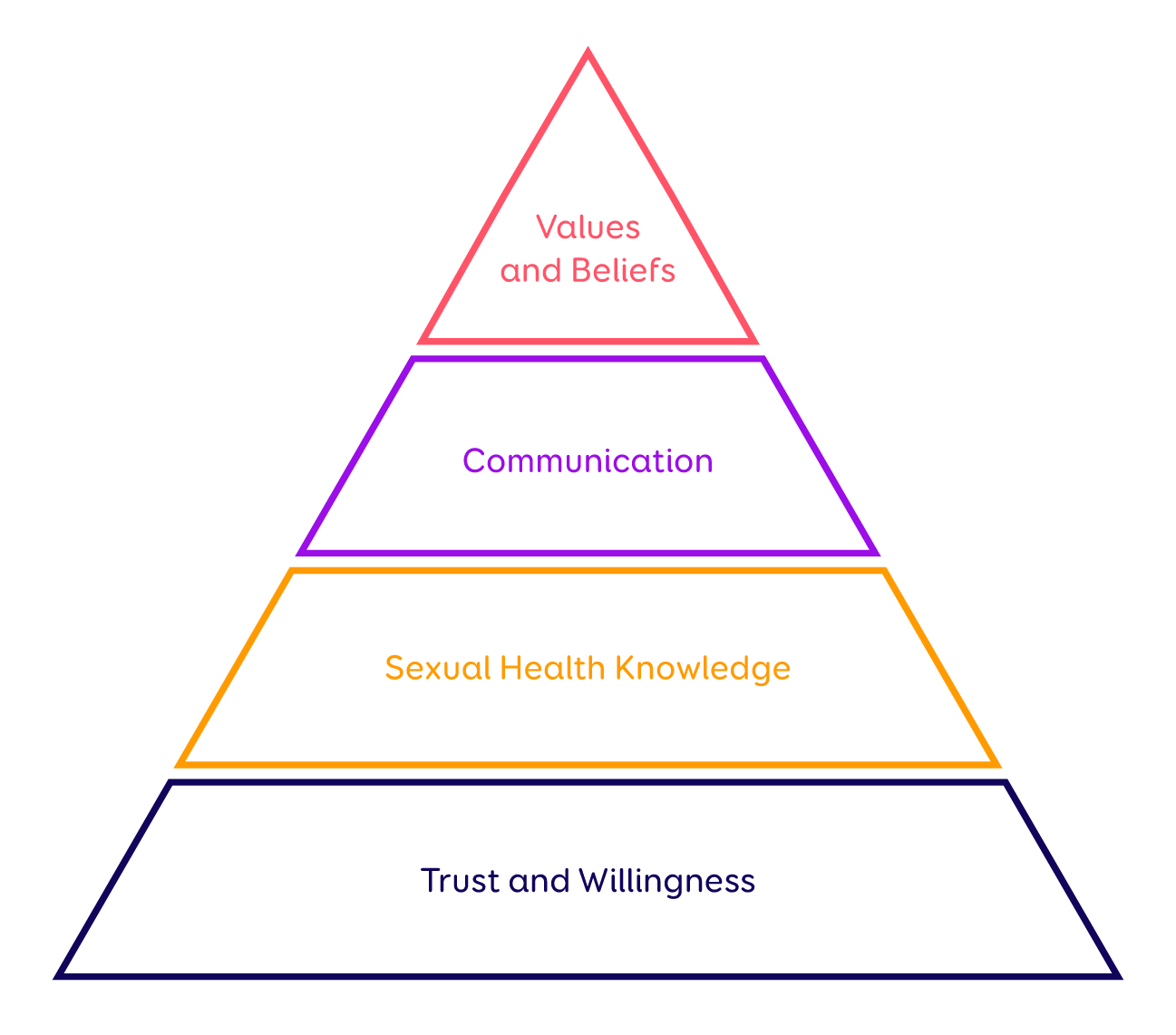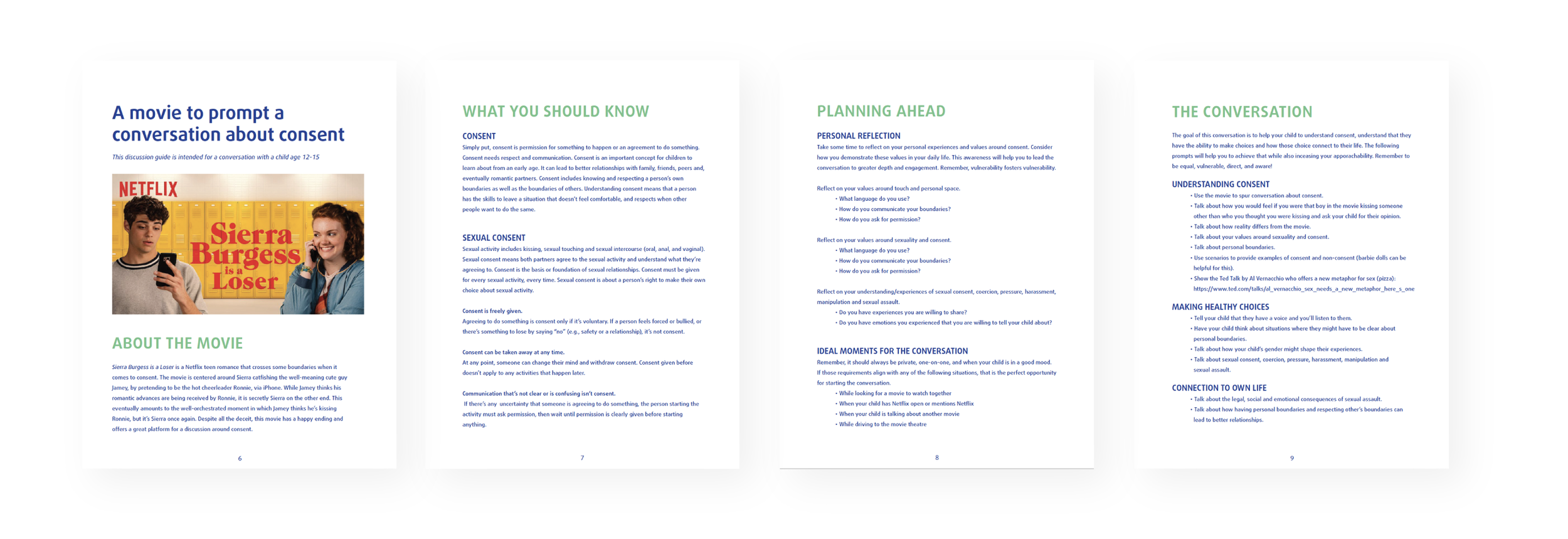Helping parents and tweens talk about sexual health — without cringing
Spring 2019
An Uncomfortable Conversation
There is an all too familiar discomfort for parents and tweens alike when it comes time for “the talk.” Parents wrestle with how to start the conversation, what to say, how much to disclose, and how to avoid embarrassment all-around. This struggle leaves tweens to their own devices when it comes to developing healthy sex related attitudes and behaviours.
Final Product
Prompted encourages frequent discussions about sexual health through interactive conversation guides curated to the tween’s unique pop culture interests, as well as their age and stage. These guides shift the focus away from a personal lens to promote open dialogue, reduce discomfort, and normalize the topic of sex. With Prompted, parents become the resource that helps to form healthy sexual attitudes and behaviours in their tweens (rather than Pornhub).
Now That’s More Comfortable
Having simpler, more frequent, and less personally focused conversations makes it easier and more comfortable for both parent and tween. Parents and sex-educators have found that using scenarios in the media to spark discussion has been beneficial. Combining this technique with accurate information and conversation guidance provides parents with a foolproof approach for talking about sexual health with their tweens.
Research
Problem Space
Children aren’t receiving adequate sexual health education.
The project began with concerns of the recent repeal of the 2015 Health and Physical Education Curriculum, which had been developed through extensive research with the help of parent and expert involvement. This meant the loss of important topics such as LGBTQ, gender identity and expression, consent, online behaviour, and masturbation. I found this deeply frustrating and worried how children would then receive an adequate sexual health education.
This raised the question: How might we support and empower parents to navigate the topic of sexual health with their children?
Research methods
Understanding how parents and children talk about sexual health.
Both primary and secondary research were conducted to gain a clear understanding of the complexities around talking about sexual health in the parent and child dynamic. This work was guided by the following questions:
What are parent’s perceptions, abilities, and experiences talking about sexual health?
What do sexual health conversations with their children look like?
What makes these sexual health conversations successful and unsuccessful?
What opportunities exist to improve these conversations?
Secondary research included an exploration of the works of sex-education experts, Al Vernacchio and Janet Rosenzweig, as well as an in-depth literature review of studies that investigated parent involvement in sexual health education.
Primary research included two surveys completed by 48 parents in total, as well as in-depth interviews with four parents and two sex-educators working in Ontario. A quantitative and qualitative analysis of the YouTube series called Parents Explain was conducted. This series contains videos of parents educating their children on various sexual health topics, which were codified and visually mapped for deeper understanding.
Key Insights
This research and synthesis translated into five key insights:
Parents are unaware of the importance of their role in developing healthy sexual attitudes and behaviours in their children, but also overestimate their ability to do so.
Just as children are often left to their own devices to learn about sexual health, parents are left to their own devices to figure out how to provide support and guidance to their children through the years of development.
Physical, social, and emotional aspects of sexual health are equally important for equipping children with decision-making skills that serve their personal values and beliefs.
Clever parents ease the discomfort by discussing scenarios that involve other people (known or in the media) to remove the personal element from the conversation.
Successful conversations require a foundation of trust, upon which sexual health information can be communicated and discussed thoughtfully, and potentially touch on value and beliefs.
Journey Mapping
Understanding the conversation flow and dynamic.
This research informed the typical conversation journey between parent and child. It is primarily up to the parent to foster engagement and discussion because the way in which they question or inform their child greatly influences the success of the conversation.
Guiding Principles
Equality, vulnerability, direct language, and balance.
Research directed at the communication aspect of the conversation revealed four guiding principles to promote the child’s engagement during sexual health conversations.
Equality: Parents and children are equals learning from one another, and sharing opinions and experiences. Parents are helping their children to build understanding and their own values, but the parent is not providing a lecture and the child is not a student.
Vulnerability: Asking the child what they know can be a helpful starting point, but it won’t progress the conversation. Parents must be willing to say the difficult things and encourage their children to follow suit. Sharing knowledge and feelings gives children space to share too.
Direct Language: Parents should use simple and correct terminology to communicate with clarity and without shame. Being vague and indirect causes confusion and doesn’t foster openness.
Balance: It’s important to talk about responsibility, but joy and pleasure should not be ignored. Parents should be open and honest about the realities of sex.
Design and Iteration
Solution Development
Harnessing the media for sexual health context.
Pursuing a solution in which pop culture scenarios provide context to facilitate sexual health conversations revealed an array of benefits. This approach allows for smaller, but more frequent conversations on a broader range of topics within sexual health as there are endless scenarios perfect for prompting discussion.
Having these regular chats normalizes the topic of sex and lays a foundation of trust and comfort. This moves away from the idea of “the talk” which is known to be painfully awkward and typically happens once or twice in a child’s lifetime.
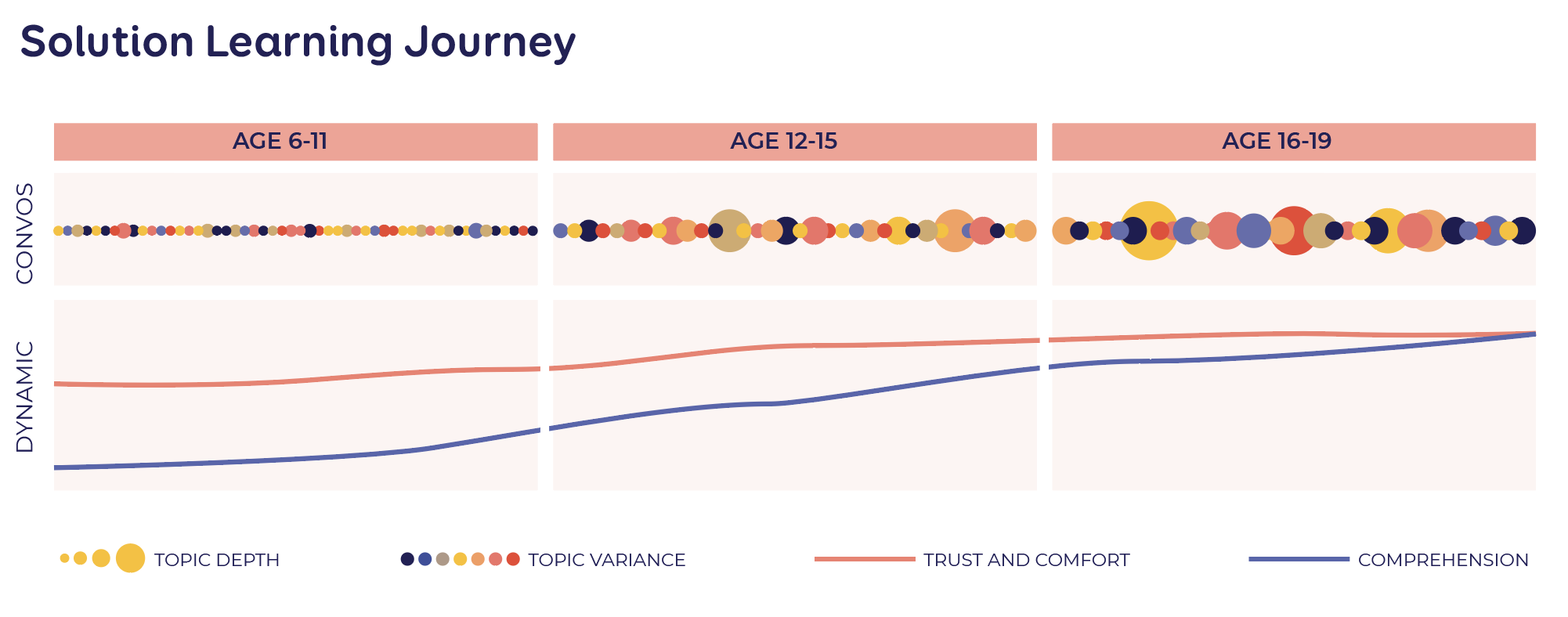
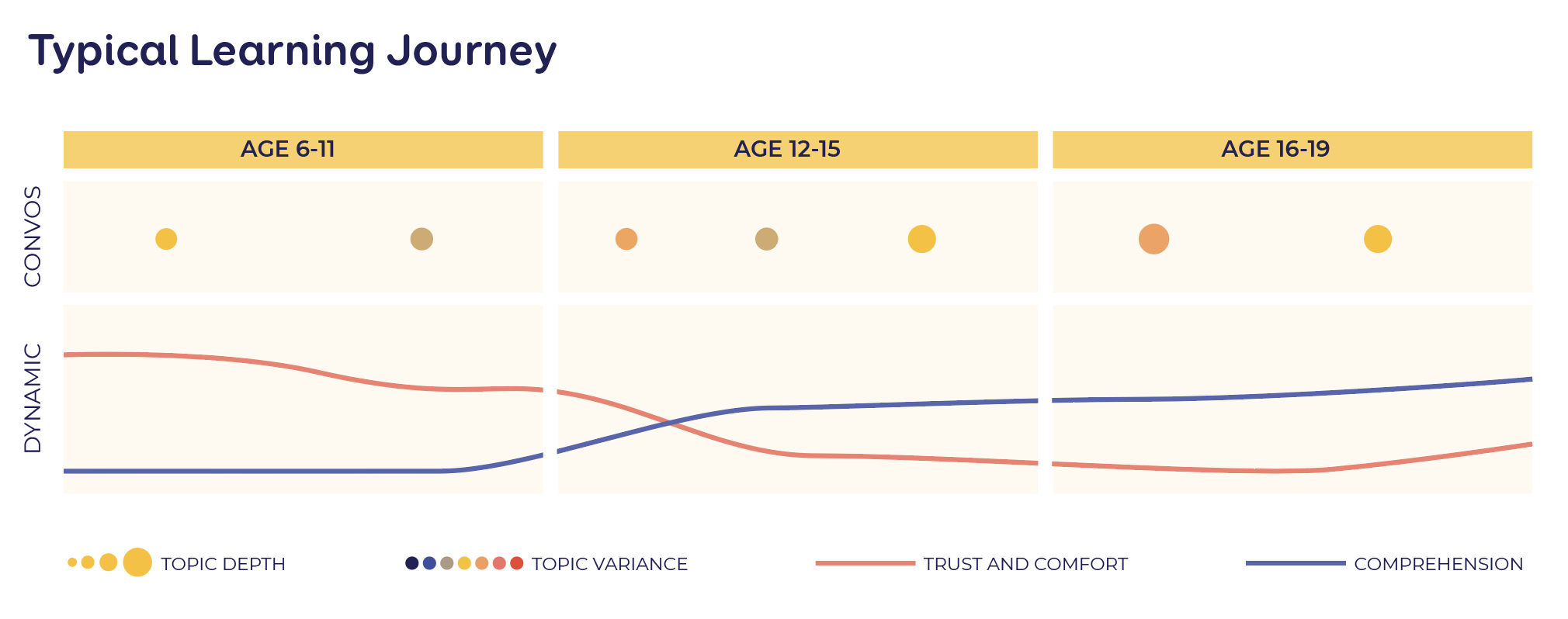
Prototyping
Crafting the conversation guide.
The first guide focused heavily on the topic of consent with some connection to a movie and was to be read by only the parent prior to a conversation. It provided prompts for personal reflection to prepare for the conversation, as well as what to talk about with the child.
Key Insight: Information overload is not guidance.
The second conversation guide was much shorter in length and focused more equally on pop culture context and sexual health information. Like the first guide, it was to be read by only the parent before the conversation.
Key Insight: Preparing for a conversation in advance makes it too difficult to act naturally.
The third guide was completely redesigned to be interactive and used by both parent and child together. Like the second guide, it focuses equally on pop culture context and sexual health, but is designed to be more engaging through direct prompting. Context related questions are directed specifically at the parent, child or both. Additional prompts provide information to support and encourage further discussion.

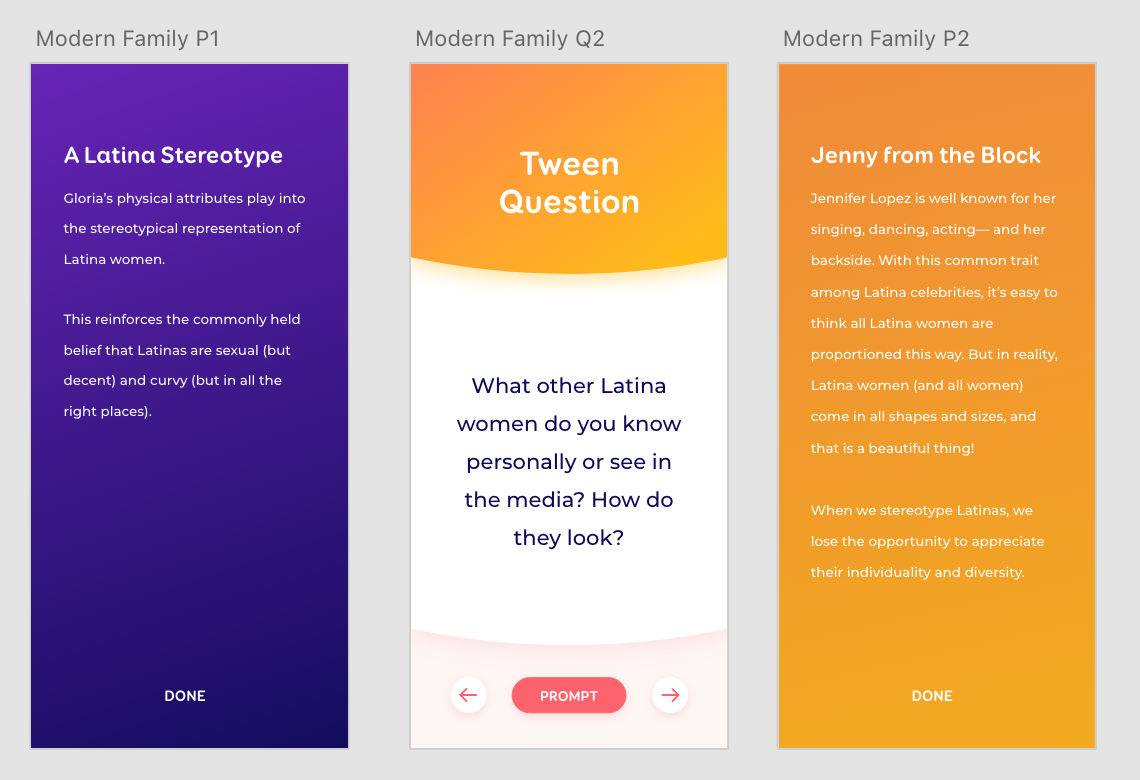
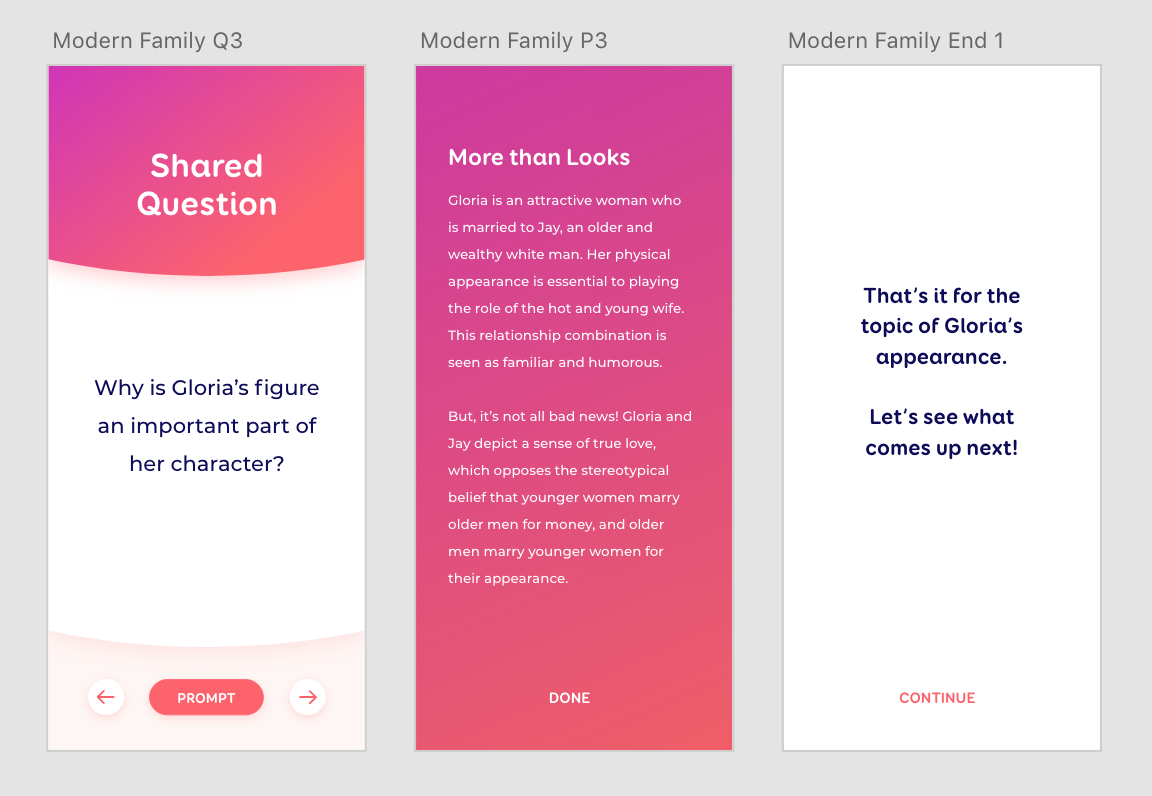
This guide effectively incorporates the guiding principles, relieving the parents of having to consciously attempt to adhere to them on their own.
The directed questions create a level playing field for both parent and child and act as a mediator that removes the pressure and discomfort around the topic.
With the support of the guide, both parent and child are prompted to share their thoughts and be vulnerable, but with the more difficult questions directed to the parent.
The guide provides accurate sexual health information and uses direct language, so the message is clear and the parent doesn’t have to remember all the details in advance.
The guide also provides a balanced perspective on responsibility and pleasure.
User Testing
This final conversation guide was tested with a parent and his 12 year old son. The parent reported that the conversation was enjoyable and comfortable despite being nervous at first. The child was engaged and shared his opinions. It was stated that, “[The child] enjoyed the challenge of answering the questions. It gave him some license to do so.” It also allowed the child to engage in thoughtful, active discussions in ways he had not done so previously, so he sometimes struggled to find the right words. This indicates that the conversation guide structure fosters new ways of thinking and perhaps critical thinking. This user test confirmed the usefulness and effectiveness of the conversation guide and concept as a whole.
Outcome
Final Design
The final design brings the conversation guides into a mobile application where content is curated to the child’s unique pop culture interests, as well as their age and stage. Chat guides can be searched by keywords or filtered by tags. Since these chats often require the right opportunity, they can be saved for later and quickly accessed. After a chat has been completed, the parent is prompted to complete a reflection that informs progress tracking. Achievements are used as a subtle form of gamification and also as a guide to help parents set benchmarks for themselves.
The Prompted app has been prototyped using Adobe XD and includes three complete conversation guides that are appropriate for tweens.
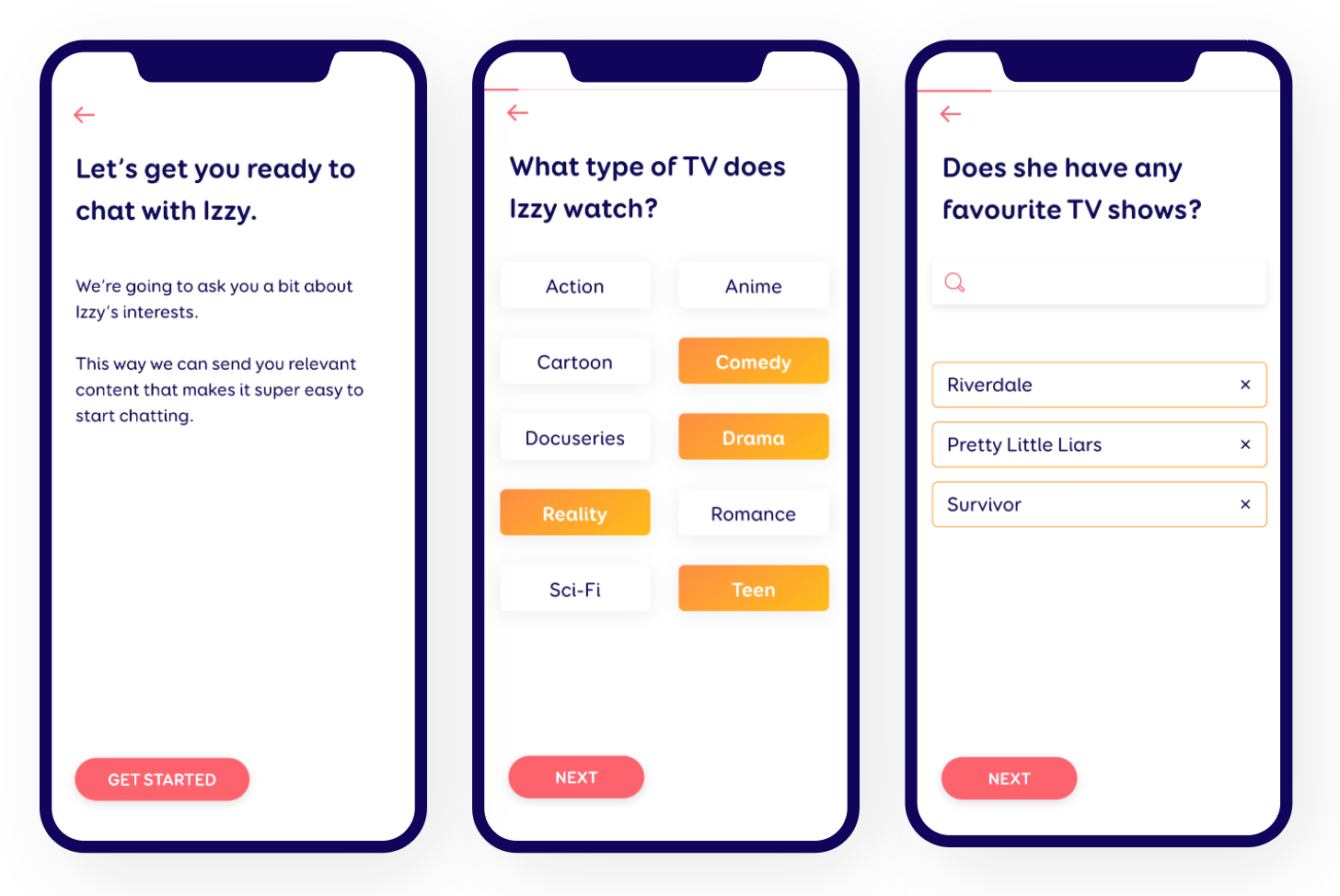
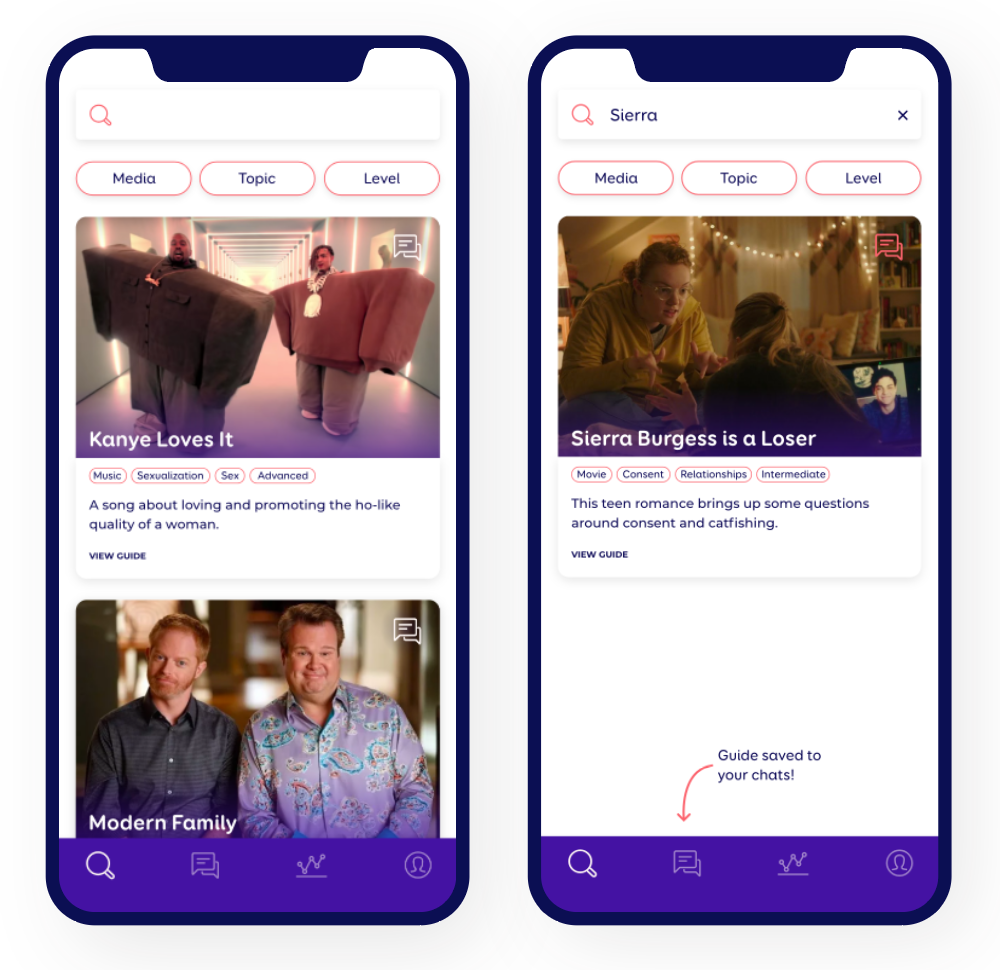
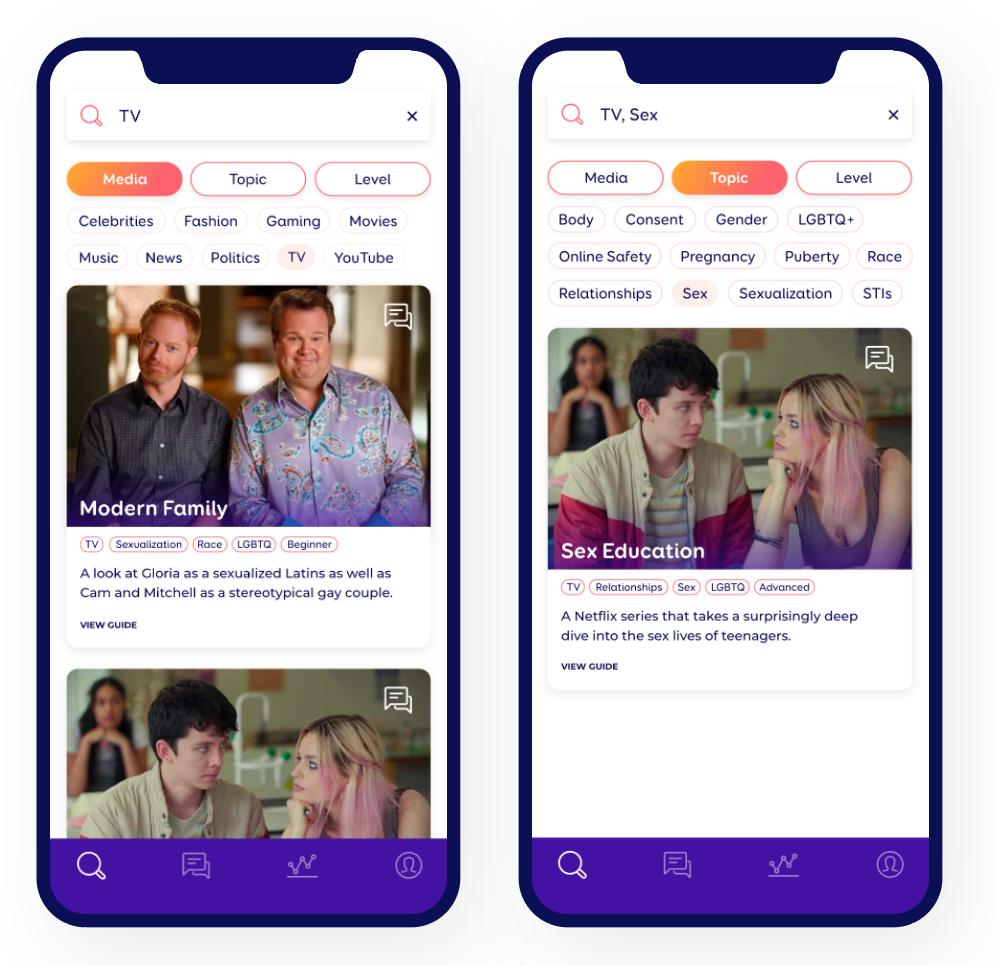
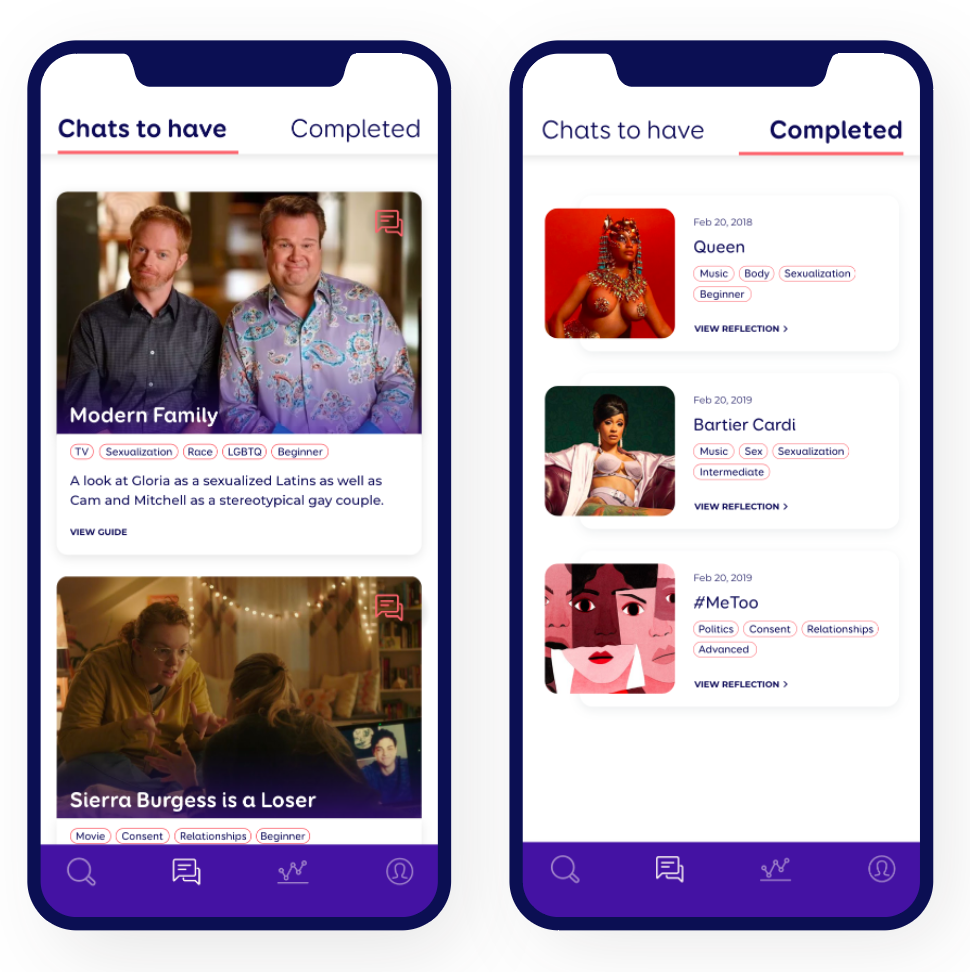
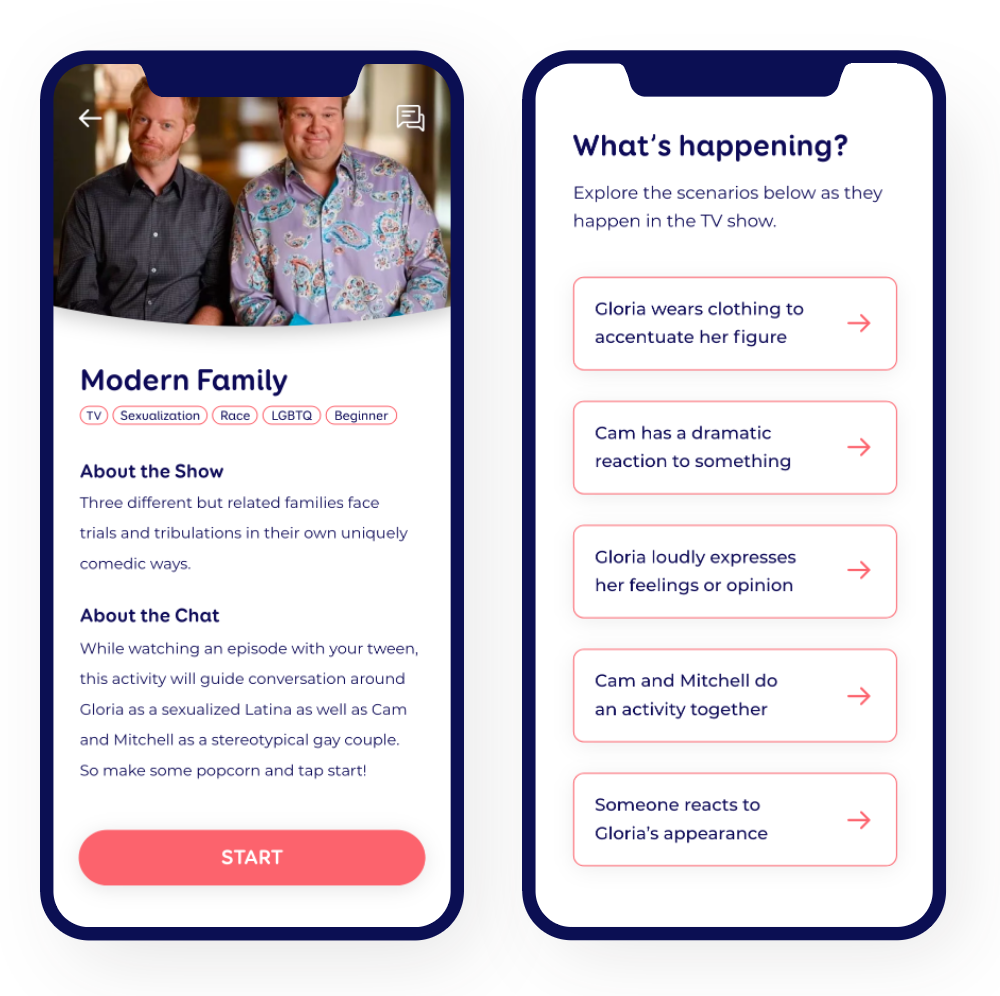
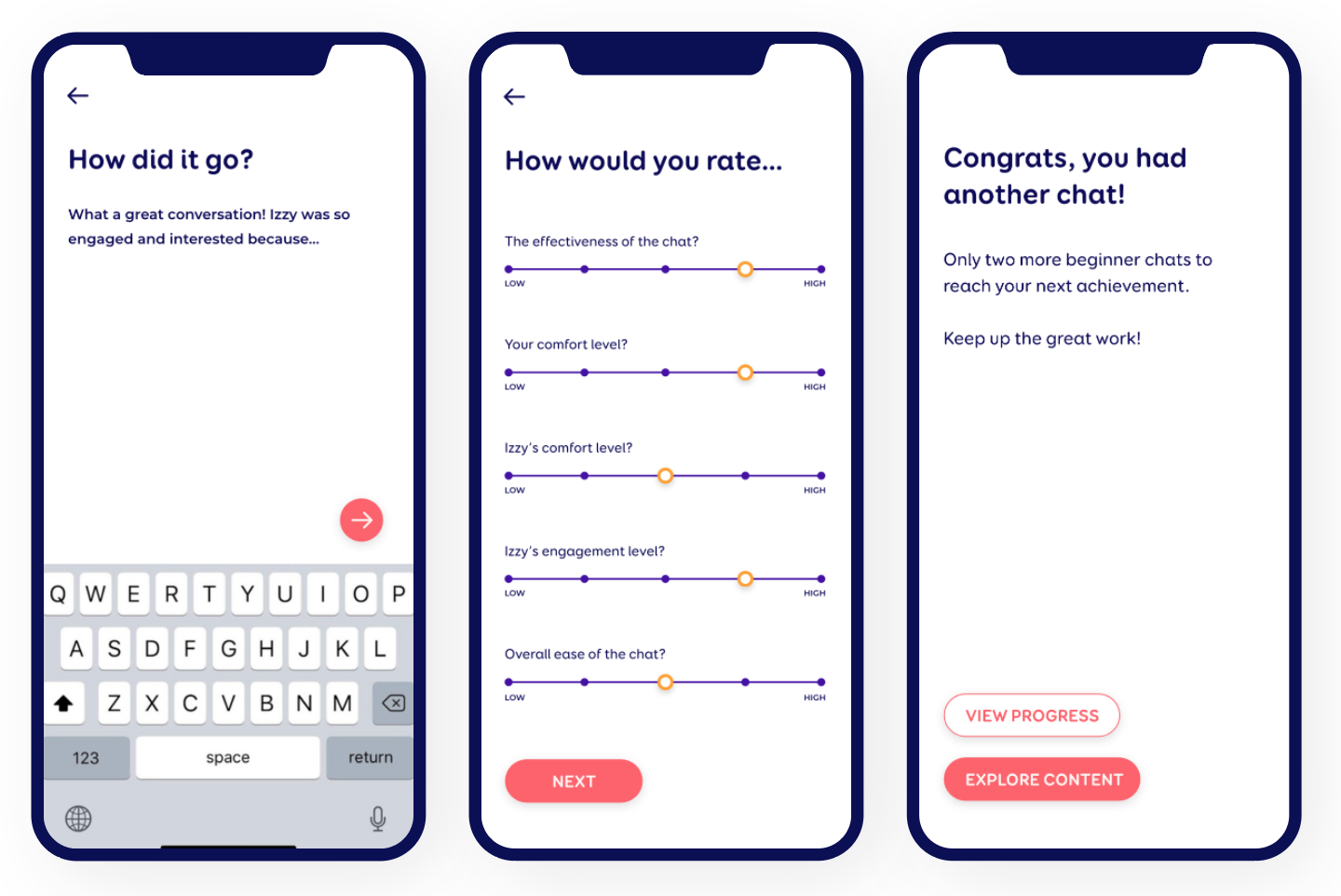
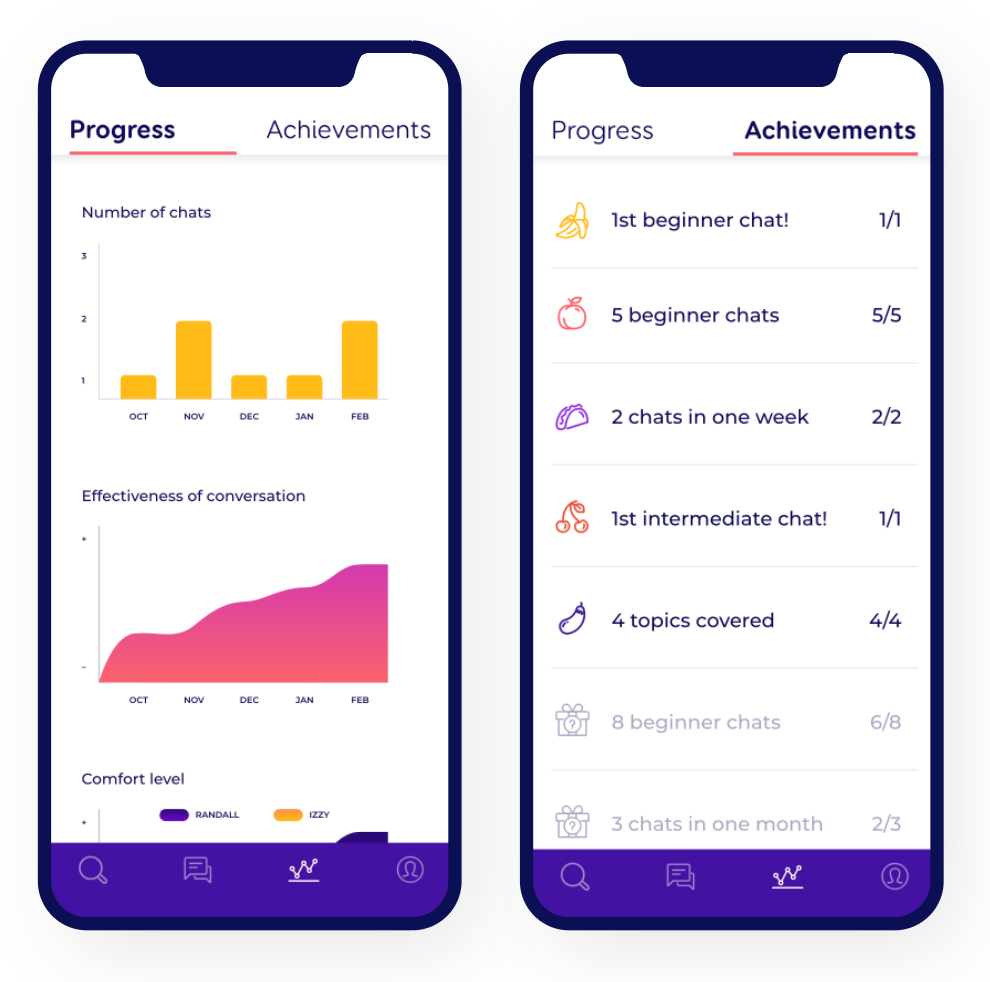
Visual Identity
The visual identity strikes a balance between playful and friendly, and accurate and trustworthy. Cheerful and inviting colours attempt to make talking about sexual health less of a chore and are applied strategically throughout the app. Both the tween and parent interact with the conversations guides, so there is greater use of colours and gradients to bring excitement to the experience. The remainder of the app is used primarily by the parent, so colours are applied minimally. The selected typefaces are friendly, highly readable, and complement one another.
The tone and manner is conversational and light to put the user at ease and foster engagement. The slightly comical but intelligent voice helps to provide relief from the seriousness and discomfort around the topic.
A more detailed breakdown of visual design is coming soon!
Reflection
Explore More!
Using pop culture to facilitate sexual health conversations has proven to be an effective solution, but has not yet been explored to its fullest potential. It would have been interesting to see how voice integration would impact the dynamic of the conversation and how this concept could adapt to a classroom setting. This work relies on improving the parent experience to subsequently improve the child experience. More consideration for the child’s buy-in and motivation could strengthen the concept.


